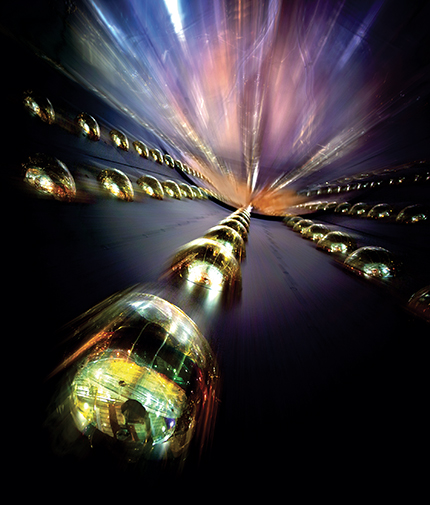As nuclear fuel ages, an antineutrino anomaly changes
DOI: 10.1063/PT.3.3616
For several years now, detectors at three experiments—Daya Bay in China, RENO in South Korea, and Double Chooz in France—have been measuring the flux of electron antineutrinos emanating from nearby nuclear reactors. The experiments’ main purpose has been to help quantify the oscillations of neutrinos from one flavor to another, but along the way their precise measurements have sharpened a mystery that has troubled particle physicists and reactor physicists alike: The overall antineutrino flux is about 6% less than theory predicts. One explanation involves a “sterile” neutrino with a mass of about 1 eV that, unlike the three standard neutrinos, is not subject to the weak force that governs nuclear decay.

ROY KALTSCHMIDT, LAWRENCE BERKELEY NATIONAL LABORATORY

Now the Daya Bay group has analyzed 1230 days of data and identified a new factor that influences the antineutrino flux: the evolving isotopic composition of the nuclear fuel in the cores of the reactors at the Daya Bay and Ling Ao nuclear power plants. (The image shows the inside of one of the group’s detectors.) The new results contradict the notion that sterile neutrinos are the source of the antineutrino flux anomaly.
Uranium-235 and plutonium-239 are the key components of the fuel at the Daya Bay and Ling Ao power plants. But over the course of the reactors’ typically 18-month-long fuel cycles, the relative amount of 239Pu increases. By monitoring how the antineutrino flux evolves during the fuel cycles, the Daya Bay researchers determined the rate of change of flux with changing 239Pu fraction. They also teased out the individual contributions of 239Pu and 235U to the antineutrino flux.
In the low-mass sterile-neutrino
